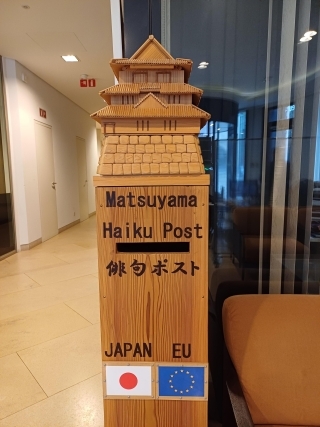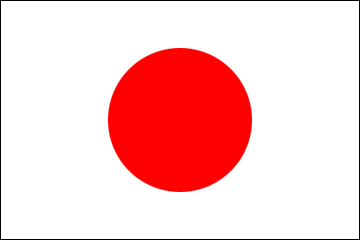‘Matsuyama Haiku Post’ Contest
2024/7/3

The Mission of Japan to the European Union invites haiku poets, be they amateurs or experts, to submit their artistic piece for the ‘Matsuyama Haiku Post’ contest.
Those wishing to participate in this contest may submit haiku poems on a topic of their choice, in either English, German, Korean or Chinese. The poems received will be transferred to Matsuyama city (in Ehime prefecture, Japan), where they will be judged along with other poems submitted from around the world.
The authors of selected haiku poems will receive commemorative prizes from Matsuyama city, and their works will be published on the website of the city:
https://www.city.matsuyama.ehime.jp/kanko/kankoguide/rekishibunka/haiku/gaikokugo.html
Background
Matsuyama city, the birthplace of the poet who gave haiku its name (Masaoka Shiki, 1867-1902) and home to other well-known haiku poets, has set up Haiku Post boxes in a number of places of interest in Matsuyama city itself, as well as outside of Japan: Brussels; Freiburg in Germany (a sister city); and Taipei in Taiwan (a friendship exchange city). Haiku poets in the EU’s capital city have been able to participate in this contest for over 10 years as the post box was installed in 2012.
Rules for writing Haiku
The structure of a traditional haiku is as follows:
You may refer the following well-known haiku poems as examples:
How to apply
Fill in this form and send it to info@eu.mofa.go.jp or post into ‘Haiku Post’ on the ground floor at the Mission of Japan to the EU, by the 31st of December 2024.
Those wishing to participate in this contest may submit haiku poems on a topic of their choice, in either English, German, Korean or Chinese. The poems received will be transferred to Matsuyama city (in Ehime prefecture, Japan), where they will be judged along with other poems submitted from around the world.
The authors of selected haiku poems will receive commemorative prizes from Matsuyama city, and their works will be published on the website of the city:
https://www.city.matsuyama.ehime.jp/kanko/kankoguide/rekishibunka/haiku/gaikokugo.html
Background
Matsuyama city, the birthplace of the poet who gave haiku its name (Masaoka Shiki, 1867-1902) and home to other well-known haiku poets, has set up Haiku Post boxes in a number of places of interest in Matsuyama city itself, as well as outside of Japan: Brussels; Freiburg in Germany (a sister city); and Taipei in Taiwan (a friendship exchange city). Haiku poets in the EU’s capital city have been able to participate in this contest for over 10 years as the post box was installed in 2012.
Rules for writing Haiku
The structure of a traditional haiku is as follows:
- Only three lines, totalling 17 sounds in Japanese, in a 5–7–5 pattern
- Contains one word referring to the season
- Use short and simple words omitting unnecessary details
- Written as short as possible within 17 syllables, in the three-line format
- About nature, people or their feelings
- Punctuation and capitalisation are up to the poet
- Does not necessarily need to rhyme
- It may include the repetition of words or sounds, and also a dash (-) or an ellipsis (...) at the end of a line to create a break
You may refer the following well-known haiku poems as examples:
古池や 蛙飛び込む 水の音(ふるいけや かわずとびこむ みずのおと)
old pond
frogs jumped in
sound of water
old pond
frogs jumped in
sound of water
松山や 秋より高き 天主閣(まつやまや あきよりたかき てんしゅかく)
matsuyama -
higher than the autumn sky
the castle tower
matsuyama -
higher than the autumn sky
the castle tower
柿くへば 鐘が鳴るなり 法隆寺(かきくえば かねがなるなり ほうりゅうじ)
biting into a persimmon
a bell resounds
Hōryūji
biting into a persimmon
a bell resounds
Hōryūji
How to apply
Fill in this form and send it to info@eu.mofa.go.jp or post into ‘Haiku Post’ on the ground floor at the Mission of Japan to the EU, by the 31st of December 2024.
